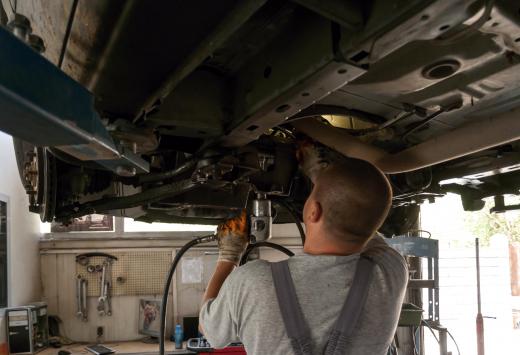There are many different hoist designs used throughout the world, with each having its own particular benefits. The traditional single-post hydraulic hoist has been used for decades in garages and repair facilities, while the four-post hoist designs have been very popular in home garages and custom shops. The most recent hoist designs use the two-post hoist in a multitude of configurations, from air to electric lift mechanisms. Other types of hoist design can be found on construction sites, and even portable hoists are available for use when a garage is not an option for making repairs.
For many types of vehicle repair, the use of a hoist is mandatory to enable the mechanic access to the underneath of the vehicle. The difference in hoist designs offers a well-equipped repair facility the choice of several styles, with each offing a potential benefit over that of the other styles. In typical automobile hoist designs, the lifting ram is directly in the center of the vehicle. This design works well in balancing the vehicle while it is on the hoist; however, these hoist designs place the hoist arms and brackets under the the vehicle, preventing access to many vital components.

The common four-post hoist designs use a pair of ramps that are lifted at all four corners by cables affixed to the ramp framework. This is a common design used in home garages due to the lack of need in bolting the hoist to the concrete floor. The problem with these types of hoist designs is that the vehicle is required to sit on all four tires as it is on the lift. To work on the vehicle's brakes, suspension or other components, the vehicle must be raised up with a jack while on the hoist. This is not only inconvenient, it is also very dangerous.
Most recently, hoist designs have focused on the two-post design. Whether being used in a home garage, professional repair facility or on a construction site, the two-post design allows the supporting arms to reach under the vehicle from the outside. This keeps the underside of the vehicle open and easily accessible.
Some portable designs use a side-mounted lifting mechanism that reaches under the vehicle to contact the chassis. This allows the wheels to be removed while the vehicle is in the lifted position. This style is often found on construction sites for the on-site repair of equipment.
